How to Send Leak Alerts Growers Can Trust
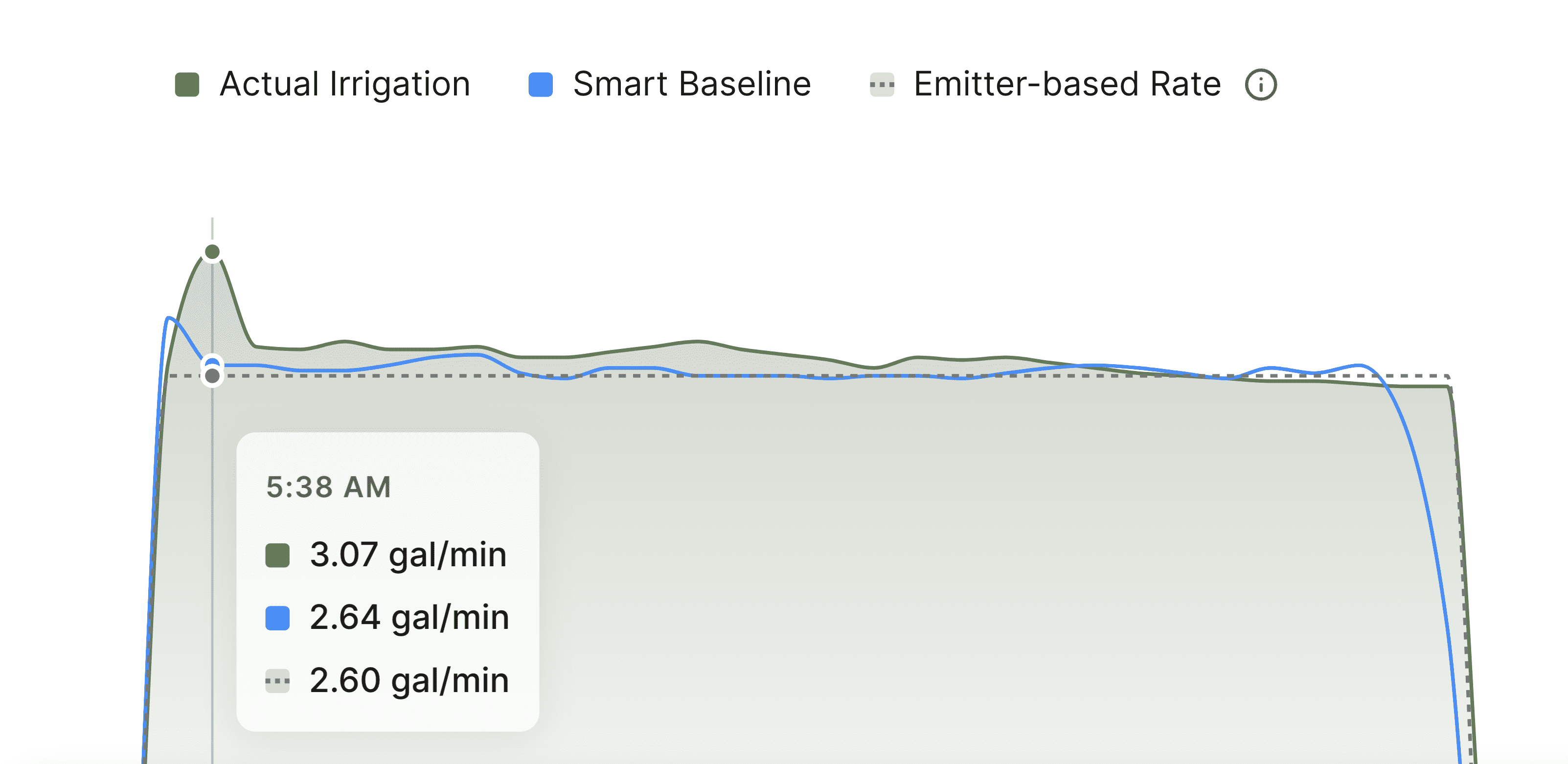
When setting up a system to send leak alerts, it would be great to be able to simply err on the side of caution. You don’t want to miss a catastrophic leak, after all.
The problem you quickly run into, however, is that if you set up your system to be too cautious, you’ll end up sending a bunch of false alarms.
Last season, 7 out of 10 irrigations that ran through our system deviated by more than 10% away from what would theoretically be expected based on the emitter and vine counts provided.
At that frequency, it doesn’t take long for you to become the boy who cried irrigation leak alert and for your warnings to go ignored.
It’s a rock and hard place situation. You either run the risk of missing a leak or having your leak alerts become meaningless.
The way out? Better calibration.
Introducing Smart Baseline
From past experience, we know vineyard blocks and irrigation systems all come with their own set of quirks. Perfect performance is rare in the real world.
Real flow rates rarely match theoretical expectations for a variety of practical reasons—old emitters, elevation changes, infrastructure issues, pressure or pump problems, general wear and tear that doesn’t require or justify an immediate fix.
If we sent out alerts every time flow rates failed to match the theoretical rate, our clients would want to pull their hair out.
Smart Baseline is what we’re doing instead. Our system now learns about your vineyard blocks over time and sets a baseline flow rate that’s grounded in reality—on actual, observed, past performance.
Rather than calibrating our alerts to divergences away from a theoretical rate, we’re now able to measure against what a normal flow rate looks like for any particular block.
Here’s How It Works
1. Before you start irrigating with Lumo, we calculate a theoretical flow rate based on the emitter and vine counts you provide.
2. Once you start irrigating, we begin to fine tune our flow rate expectations based on the actual performance at each block. This is your Smart Baseline.
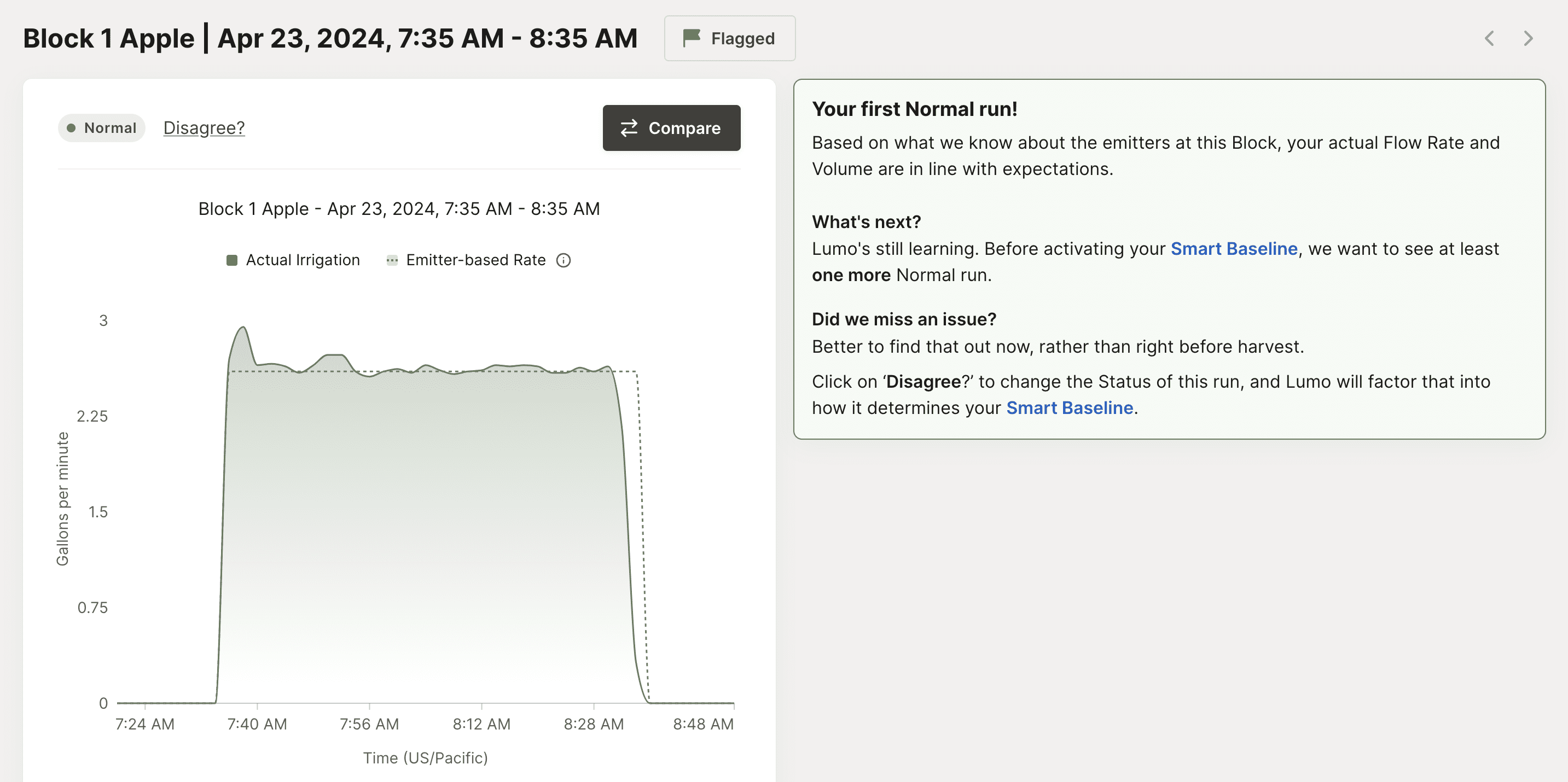
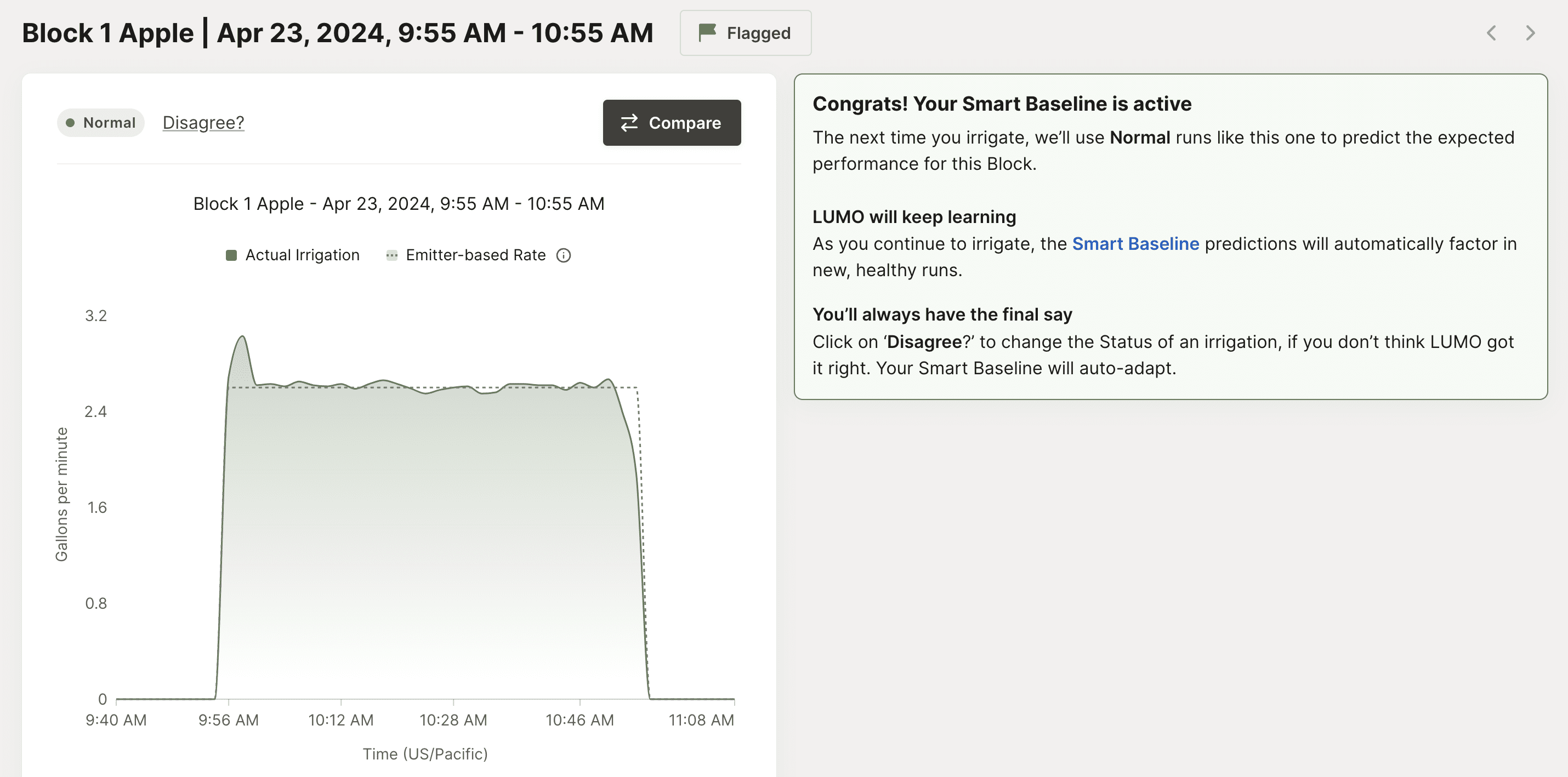
3. If your system performs well, Smart Baseline will continue to learn and calibrate on its own, allowing us to dial in our fault detection and for you to dial in your precision.
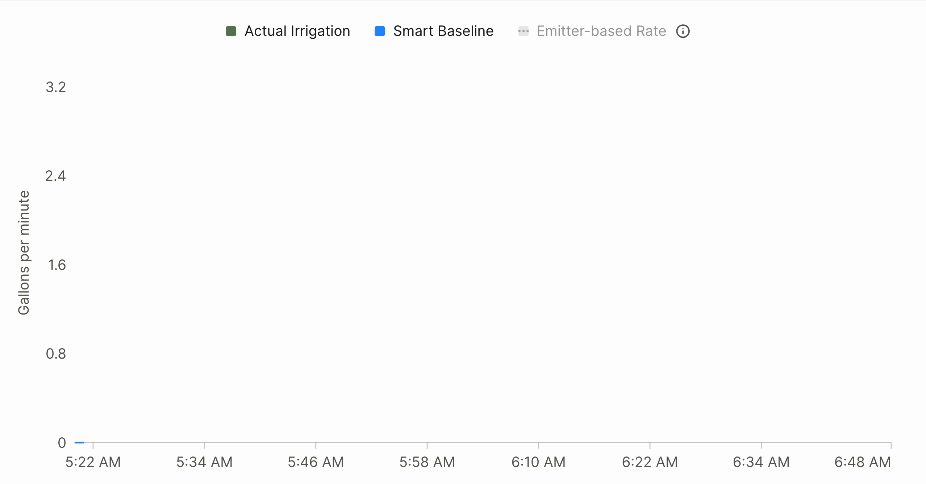
4. If your system departs significantly from theoretical expectations, we’ll flag the issue for you and provide coaching on how to figure out what’s going on.
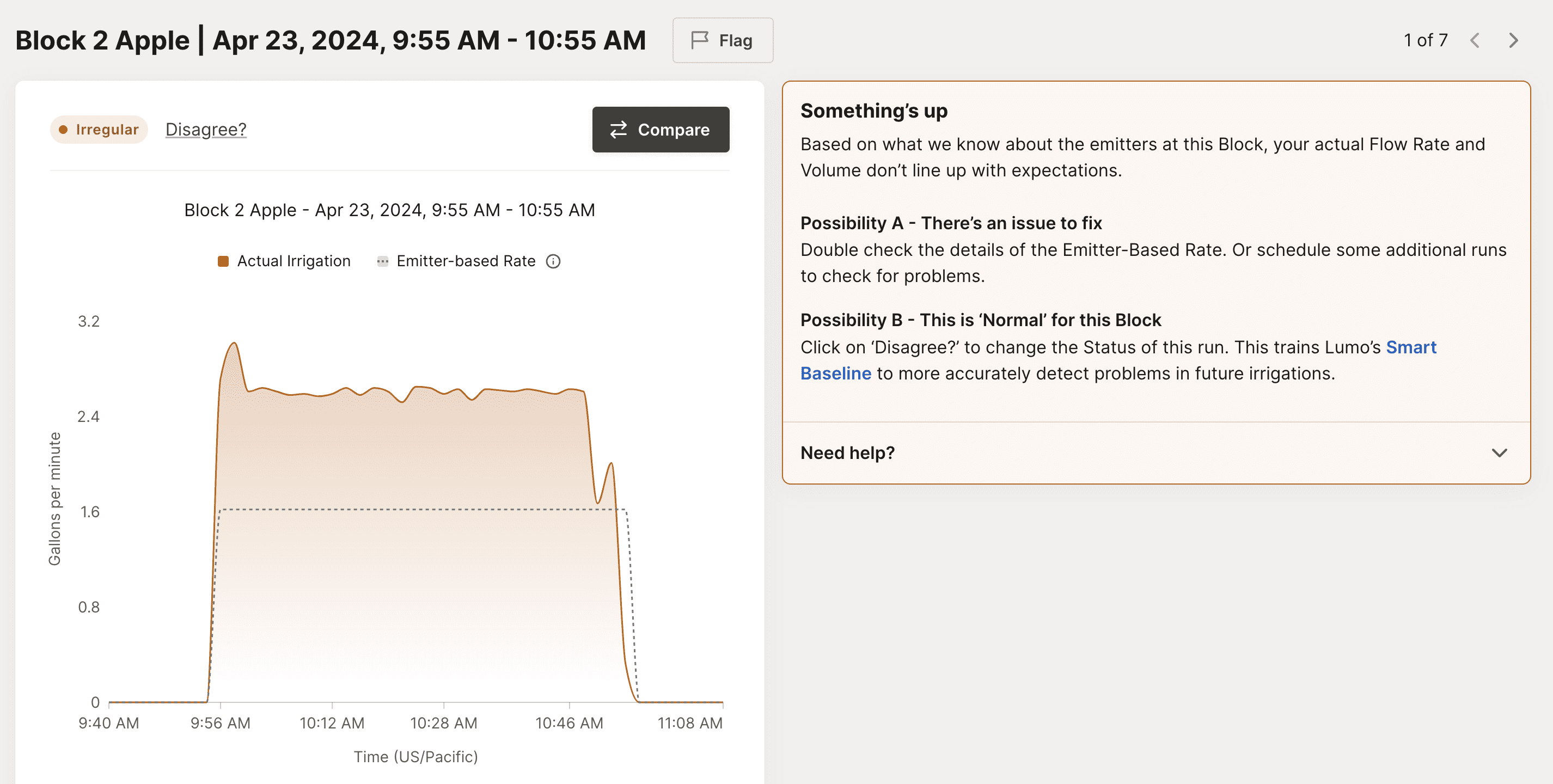
5. Through feedback and ongoing learning, Smart Baseline will continue to calibrate over time and allow us to zero in on flow rate issues that require your immediate attention. No false alarms. No catastrophic leaks missed. That’s the magic of better calibration.
Leak Alerts You Can Trust
We want every alert we send you to be reliable, meaningful and trustworthy. All signal. No noise.
By using a Smart Baseline that’s grounded in past performance, we’re able to more clearly detect deviations in flow rates that are indicative of real issues that require your attention.
A big mistake many technologists make is that they fail to appreciate just how messy and complex the real world actually is, and then end up creating a product that only works in ideal conditions.
At Lumo, we’re focused on creating a solution that accounts for all the messiness, that understands not everything is going to run at 100% efficiency all the time, and that still works, in the field, as intended.
Smart Baseline is about bringing the latest technology to bear on the problem of sending irrigation alerts in the most practical way possible. In a way that helps growers separate signal from noise, and that saves them, you guessed it—time, money and water.